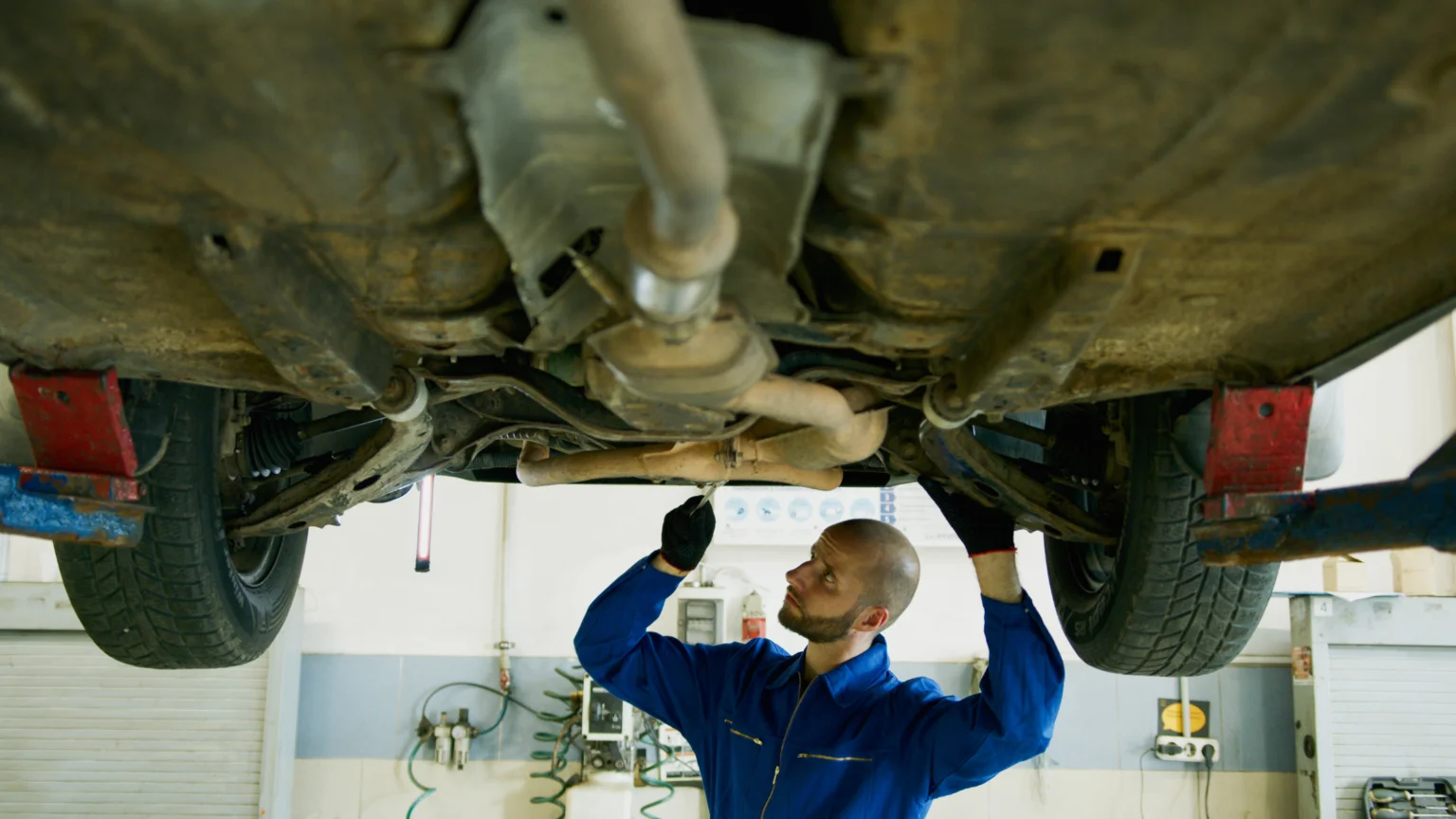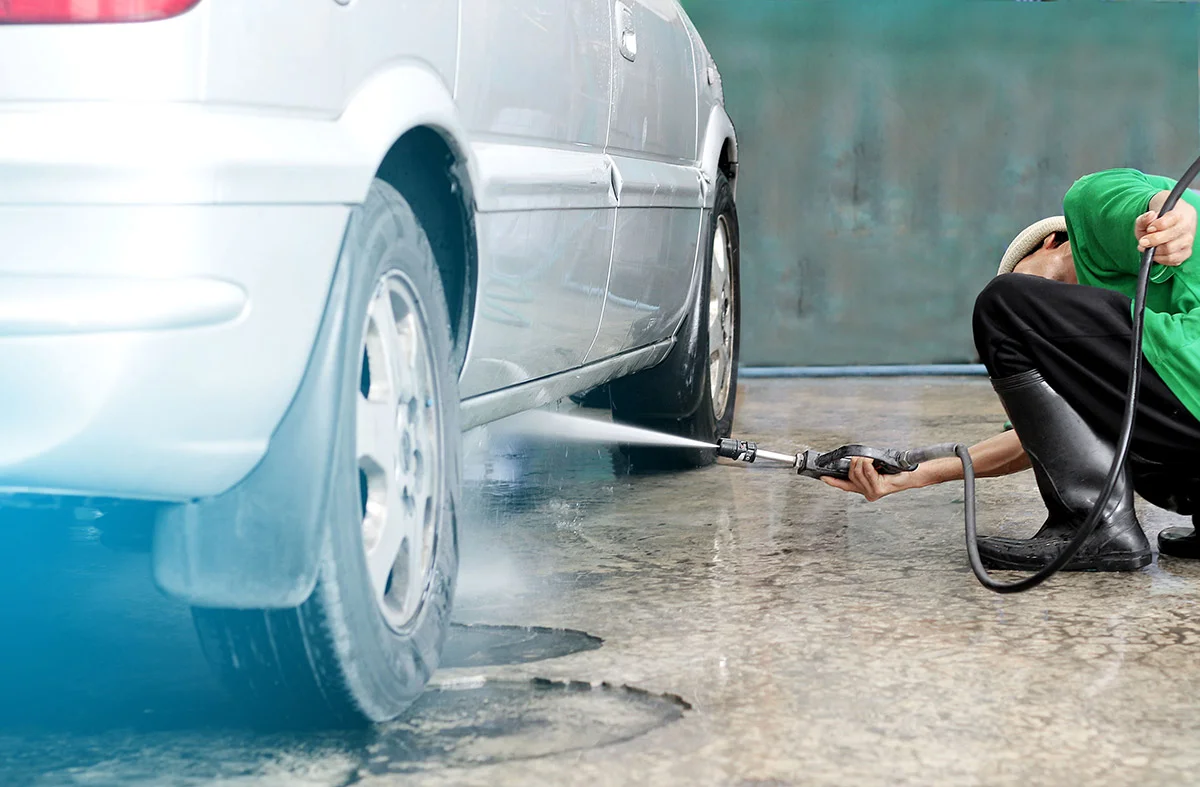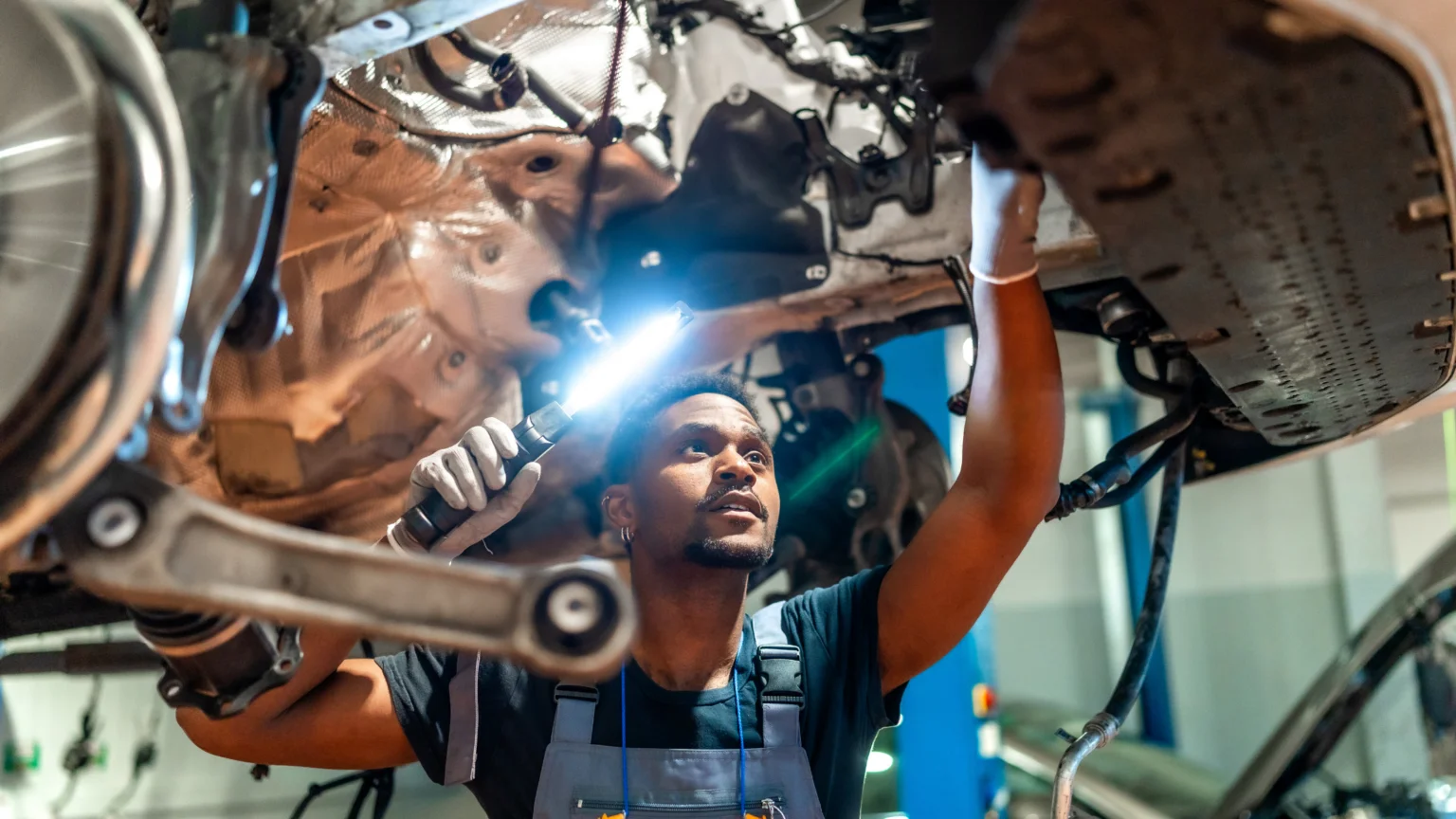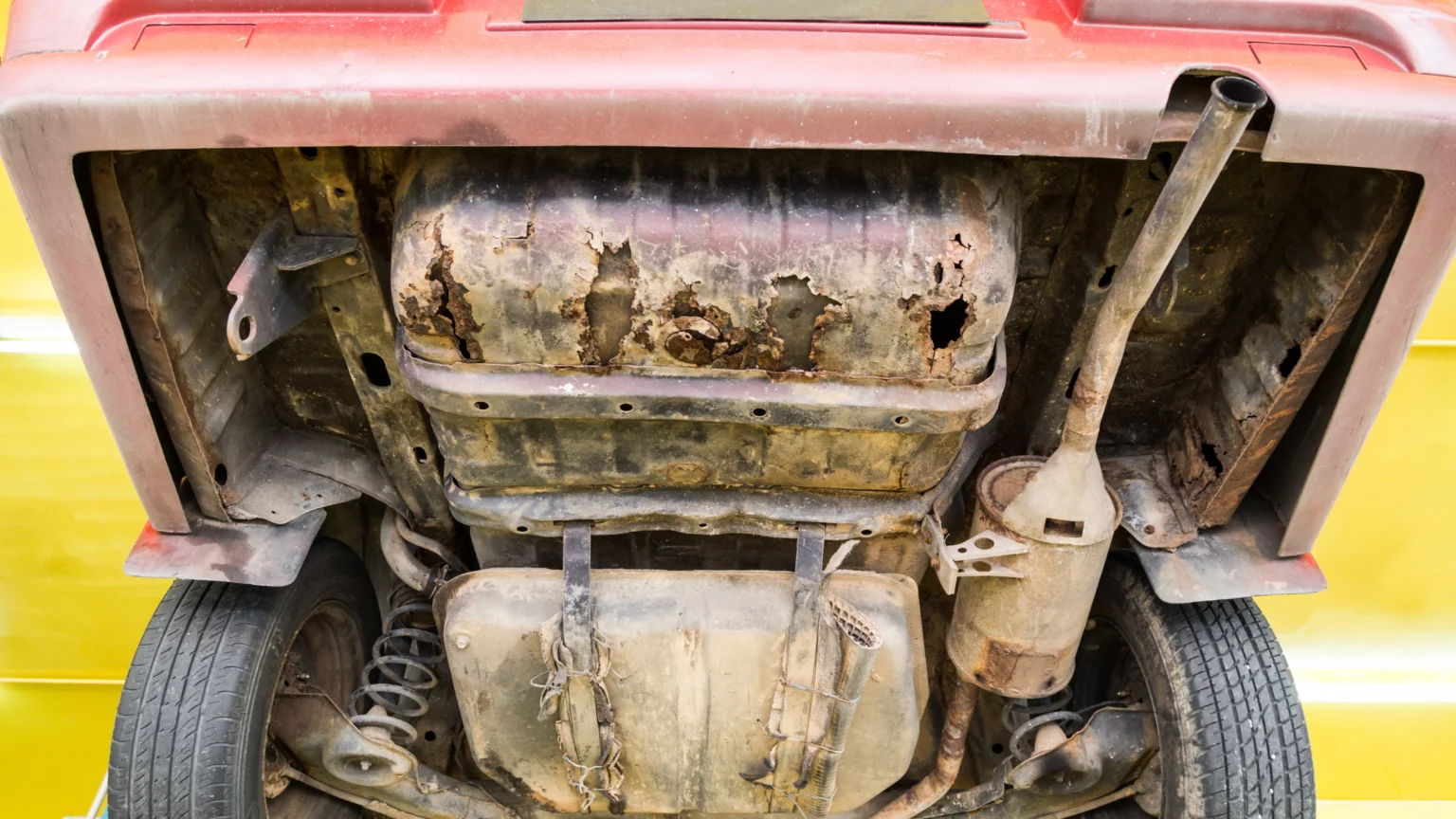
How to Spot Undercarriage Damage Before Buying a Car
Table of Contents
How to Spot Undercarriage Damage Before Buying a Car
The underside of a car often goes unnoticed by most drivers, yet it plays a critical role in the overall functionality, safety, and longevity of a vehicle. Shielded from plain sight, the undercarriage of a car houses essential components such as the exhaust system, suspension, fuel lines, and drivetrain elements. However, its hidden location also makes it highly vulnerable to damage from road debris, rust, moisture, and other wear-inducing elements, all of which can have costly and potentially dangerous consequences if left unchecked. For car enthusiasts and prospective buyers alike, paying attention to this crucial area can save significant time and money down the road.
Whether you’re evaluating a vehicle’s condition before purchase or safeguarding your current ride’s performance, inspecting and maintaining the undercarriage is an essential practice. When considering used cars, for example, the condition of the undercarriage can reveal more about the vehicle’s history than a polished exterior ever could. It can help identify hidden issues such as rust, corrosion, or structural damage that might otherwise go unnoticed. Likewise, regular maintenance practices such as an undercarriage car wash, commonly overlooked, are vital in keeping this part of the vehicle in top condition, especially if you live in regions prone to snow, salt-covered roads, mud, or sand.
Without proper attention, undercarriage problems can compromise a vehicle’s safety and lead to expensive repairs. For buyers, this means missed issues could transform what seems like a great deal into a costly headache. For current vehicle owners, neglecting this area could prematurely shorten their car’s lifespan or affect its resale value. Given its importance, understanding the basics of your car’s undercarriage, knowing what to watch for, and using tips to spot damage can make you a more informed car owner and a smarter buyer.
What Is the Undercarriage of a Car?
The undercarriage of a car refers to the underside of your vehicle. It includes various essential components, such as the suspension system, exhaust system, fuel tank, brake and steering mechanisms, and more. In modern vehicles, it also houses many structural and protective elements. This part of the car is often exposed to road debris, salt, dirt, and water, making it one of the most vulnerable areas for corrosion and damage over time.
When thinking about a vehicle’s undercarriage, remember that it serves as the foundation upon which the rest of the car operates efficiently. Any damage or neglect to the undercarriage can lead to performance issues, reduced fuel efficiency, and even safety risks.
Understanding the layout and components of the undercarriage is critical when buying a used car or inspecting a vehicle after rough driving conditions. Tools like Car Studio AI can help you identify undercarriage components clearly in detailed car photography, making it an ideal platform for used car sellers looking to provide transparency.
Common Undercarriage Damages and What Causes Them
The undercarriage of a car is constantly exposed to harsh elements, leading to significant wear and tear if unprotected. Here are the most common types of undercarriage damage and their primary causes:
1. Rust and Corrosion
Moisture, road salt, and de-icing agents used in colder climates can trigger the chemical reaction that causes rust. Over time, rust can eat into the metallic components of the undercarriage, weakening structural integrity.
2. Scratches and Dents
Driving on uneven terrain, potholes, or debris-laden roads often results in scratches, dents, or even tears in the undercarriage. Damaged protective coatings can exacerbate vulnerability to rust.
3. Damage to Exhaust Components
The exhaust systems, including the pipes and catalytic converter, are situated underneath the vehicle. They are prone to scraping against curbs or speed bumps, limiting efficiency or causing costly repairs.
4. Suspension System Wear
The suspension components, like shocks, struts, and control arms, can be damaged by heavy off-road driving or worn out from constant exposure to dirt, dust, and water.
5. Oil or Fluid Leaks
The undercarriage often houses protective lines for essential fluids like brake fluid, fuel, and oil. Impact damage or lack of maintenance can cause leaks, leading to expensive repairs or safety hazards.
Damage to an undercarriage can lead to long-term problems if not addressed promptly. Regular inspection and documentation with Car Studio AI’s high-resolution photography allow car owners and sellers to check for such issues meticulously.
Importance of Checking Undercarriage Damage Before Buying a Car

Inspecting the undercarriage of a car is one of the most critical steps in purchasing a vehicle, especially when buying used. Here’s why:
1. Ensures Structural Integrity
The undercarriage provides structural support to the entire vehicle. Any damage here could compromise the car’s stability and safety, especially during an accident or emergency.
2. Reveals Signs of Neglect
A rusted or poorly maintained undercarriage indicates that a vehicle may not have been cared for properly, possibly extending to other maintenance aspects.
3. Hidden Costs in Repairs
Overlooked undercarriage damage often results in expensive repairs down the line. Components like the suspension system or exhaust pipe can incur hefty charges if compromised.
4. Detects Flood Damage
Flood-damaged vehicles often carry hidden signs in their undercarriages, such as watermarks, corrosion, or moldy insulation. These vehicles might look appealing cosmetically but could become nightmares mechanically.
With Car Studio AI’s advanced imaging tools, buyers and sellers can easily showcase and scrutinize the undercarriage to ensure there are no hidden surprises during a car purchase. Sellers can also use these tools to present transparency, building buyer confidence.
Tips for Spotting Undercarriage Damage
To thoroughly inspect the undercarriage of a vehicle, follow these tips:
1. Check for Visible Rust
Look for corrosion or rust, especially in areas like the frame, exhaust system, and suspension parts. Any excessive rust could indicate that the car was exposed to moisture or road salt and left untreated.
2. Inspect the Suspension
The suspension system often takes a hit during off-road driving or contact with potholes. Ensure that the shocks and struts are stable, and the alignment is even on all sides of the vehicle.
3. Look for Leaks
Crawl underneath the car to check for oil drips, coolant leaks, or wet patches, which usually indicate issues with fluid lines.
4. Scan for Exhaust Issues

Examine the exhaust for cracks, dents, or leaks. Damaged exhaust systems not only lead to inefficiency but can also elevate emissions.
5. Utilize Professional Help
If you’re unfamiliar with undercarriage components, hiring a professional inspector is a good idea. Car sellers using Car Studio AI can also offer comprehensive undercarriage visuals to aid buyers in making informed decisions.
Why Washing the Undercarriage of a Car Is Vital
Keeping your car’s undercarriage clean is essential to prevent long-term damage and ensure maximum performance. Here’s why an undercarriage car wash should be part of your regular cleaning schedule:
1. Prevents Rust and Corrosion
Dirt and salt accumulation can accelerate rusting. An undercarriage wash removes these harmful agents, preserving the metallic structure.
2. Extends Vehicle Lifespan
A clean undercarriage ensures all components are free of debris, maintaining the vehicle’s performance and reducing wear and tear.
3. Improves Resale Value
Buyers consider vehicle cleanliness an indicator of maintenance. Routine undercarriage cleaning ensures minimal signs of neglect, boosting resale potential.
Car washes with undercarriage-specific cleaning systems are increasingly common. Simply search for “undercarriage car wash near me” to find professional services in your area. It’s always recommended to pair such services with visual inspections to verify effectiveness. Tools like Car Studio AI can enhance this process by allowing washed undercarriage photography for transparent sales listings.
How Car Studio AI Elevates Used Car Sales
Car Studio AI provides innovative solutions for automotive presentation, which directly benefit both buyers and sellers. For sellers, clear, high-quality photos of previously hard-to-capture details—such as the undercarriage—build trust with potential buyers. The AI technology highlights any imperfections and ensures optimal lighting and angles, creating professional listings.
Buyers benefit by having access to detailed views of a vehicle’s condition, cutting down time spent on physical inspections. Clear imaging of undercarriage areas can reveal hidden damage or rust spots, helping with smarter purchasing decisions.
Tools like Car Studio AI elevate transparency in the buying process, particularly for used cars, ensuring both sides engage in secure, informed transactions.
Finding The Right Undercarriage Wash Or Repair Service
When searching for services like “undercarriage car wash near me” or locating repair experts, consider the following factors:
1. Reviews and Recommendations
Look up service providers with excellent reviews and positive customer feedback. Check for specialists in undercarriage cleaning or repair if detailed work is required.
2. Use of Modern Equipment
Ensure garages or washes utilize state-of-the-art tools designed for undercarriage-specific cleaning or repairs. High-pressure cleaning and rust-proofing treatments are recommended.
3. Cost Transparency
Choose services with clear, upfront pricing for undercarriage cleaning or repairs. Avoid any hidden fees that could inflate your budget.
Spotting the Best Cars for Sale
If you’re in the market for a used vehicle, ensure the undercarriage is inspected, alongside other components like the engine and interior. With tools like Car Studio AI, sellers can provide you with an unobstructed view of every angle—including the vulnerable undercarriage—adding full transparency to the purchase.

Conclusion
Understanding the importance of a car’s undercarriage and knowing how to assess and maintain it are essential steps for ensuring vehicle longevity, safety, and value. From identifying potential damages on the undercarriage of a car to prioritizing routine undercarriage washes, these practices can prevent costly repairs and extend the life of your vehicle. When purchasing a car, especially from buy here, pay here car lots or when buying a car out of state, inspecting the automobile’s undercarriage is crucial to avoid hidden issues that could impact your investment.
Maintaining the car’s undercarriage not only enhances its resale value but also reduces the risks of corrosion and mechanical failures. Comprehensive guidance, like the insights shared here, highlights what to look for, such as rust, fluid leaks, or structural damage, ensuring you’re equipped to make informed decisions. For seamless car insights, design visualizations, and personalized car content, Car Studio AI offers innovative tools that make vehicle management more effortless and reliable.
Empower your car ownership or buying experience with the right knowledge and tools. Trust Car Studio AI to help you capture, customize, and optimize auto content effectively. Take the next step towards becoming a more informed and confident car enthusiast by visiting Car Studio AI today!
FAQs
Question: What is the undercarriage of a car?
Answer: The undercarriage of a car refers to the bottom portion, which includes essential components such as the suspension, exhaust system, drivetrain, fuel lines, and brake lines. This area is vital to the vehicle’s performance and structural integrity.
Question: Why is it important to regularly clean the undercarriage?
Answer: Regularly cleaning the undercarriage prevents build-up of dirt, road salt, and debris, which can lead to rust, corrosion, and mechanical issues. It also extends the life of components like suspension parts and brake lines.
Question: How can I inspect undercarriage damage before purchasing a vehicle?
Answer: Before purchasing, ensure the car is lifted safely or use a mechanic’s help to check for rust, bent frame parts, oil leaks, or damaged suspension components. A flashlight can help you examine hard-to-see areas.
Question: What are common damages found on a car’s undercarriage?
Answer: Common undercarriage damages include rust, dents in the exhaust pipe or fuel lines, oil leaks, broken suspension components, and scraped protective shields from road debris or off-road driving.
Question: Is an undercarriage wash necessary after winter?
Answer: Yes, an undercarriage wash is critical after winter since road salt from icy conditions can accumulate beneath the car and lead to rust, especially in areas with high salt usage.
Question: Can I wash the undercarriage myself?
Answer: Yes, you can use a garden hose with high-pressure attachments or a specialized undercarriage cleaning wand to remove dirt and debris. However, automated car washes with undercarriage cleaning features are more thorough.
Question: How does Car Studio AI help professionals identify undercarriage issues?
Answer: Using Car Studio AI’s photo enhancement tools, professionals can highlight undercarriage wear and tear in images, helping to diagnose issues or market vehicles accurately in online listings.
Question: Should I worry about the undercarriage when buying a used or leased car?
Answer: Yes, always check the undercarriage of a used or leased car for rust, frame damage, or leaks. Undetected issues can result in costly repairs later, so consider a thorough pre-purchase inspection.
Question: Are there specific signs of undercarriage damage buyers should look for?
Answer: Look for rust on the metal parts, leaking fluids, bent or loose components, and uneven tire wear, which can signal suspension or alignment problems related to undercarriage damage.
Question: Can Car Studio AI enhance photos of the undercarriage for car sales?
Answer: Yes, Car Studio AI optimizes images by adjusting lighting and contrast, ensuring potential buyers can clearly evaluate the undercarriage. This boosts transparency and builds trust in online car sales listings.
